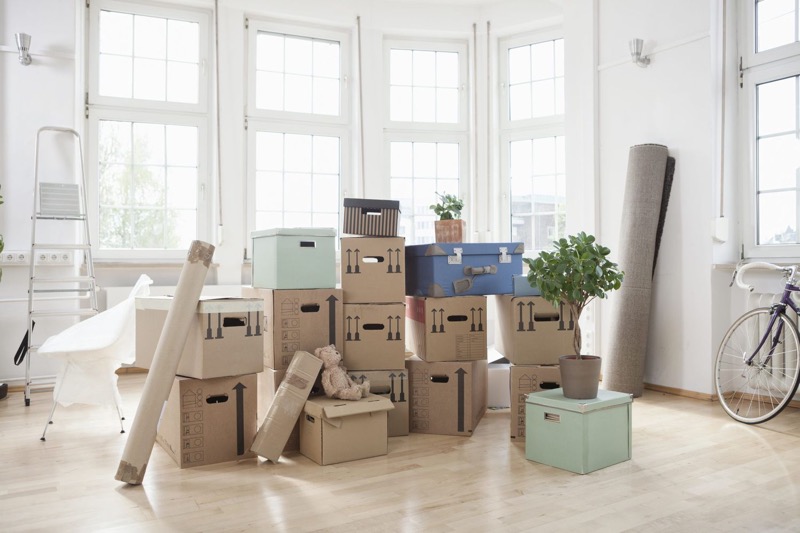Packing and protecting your furniture during a move is crucial to ensure its safety and condition upon arrival.
Whether you’re relocating to a new home or putting your furniture into storage, following proper packing techniques is essential.
In this article, you will learn eight valuable tips on how to pack and protect your furniture effectively.
From gathering packing supplies to cleaning, disassembling, and wrapping furniture, as well as exploring insurance options, these tips will provide you with the guidance you need to safeguard your furniture during the moving process.
Gather Packing Supplies
Before you start packing furniture, it’s important to gather all the necessary packing supplies. Having the right materials on hand will ensure that your furniture is protected during the move. You can also make a packing checklist to avoid forgetting any items.
Here are some essential packing supplies you’ll need:
- Moving Blankets. These thick, padded blankets provide excellent cushioning and protection for furniture items.
- Bubble Wrap. Use bubble wrap to wrap delicate and fragile items such as glass tabletops, mirrors, and decorative pieces.
- Furniture Covers. Invest in durable plastic or fabric covers designed specifically for furniture. They offer protection from dust, scratches, and moisture.
- Packing Tape. High-quality packing tape is essential for securing boxes, wrapping furniture, and keeping protective materials in place.
- Moving Straps or Lifting Straps. These straps help with lifting and manoeuvring heavy furniture, reducing the risk of injuries.
- Furniture Pads. Use them to prevent scratches and damage while moving large pieces.
- Plastic Wrap or Stretch Film. Use plastic wrap to secure drawers, doors, and loose parts of furniture to prevent them from opening during transit.
Clean the Furniture Before Packing
Cleaning your furniture before packing is an essential step to ensure its cleanliness and protection during the move.
Here are some key reasons why you should clean your furniture before packing:
- Dust and Dirt Removal. Over time, furniture accumulates dust, dirt, and other particles. Cleaning it thoroughly before packing prevents these particles from settling in during the move.
- Preventing Stains and Odours. Cleaning removes any spills, stains, or odours that may have accumulated on the furniture.
- Preservation and Longevity. Regular cleaning helps maintain the condition and longevity of your furniture.
- Health and Hygiene. Cleaning furniture promotes a healthier environment in your new space.
Disassemble Where Possible
I’m giving you a quick tip on how to move furniture – disassembling whenever possible can make the process much smoother and more efficient. Sometimes it’s just easier to let a house removals company do it all for you.
Here are some key reasons why you should consider disassembling your furniture:
- Easier Handling. Disassembling furniture into smaller components makes it lighter and more manageable to lift, carry, and transport. It reduces the risk of injuries and strain on your back or muscles.
- Space Optimisation. Disassembled furniture takes up less space in the moving truck or storage unit, allowing you to maximise the available space and fit more items.
- Protection Against Damage. Removing legs, arms, or other detachable parts minimises the risk of them getting bumped, scratched, or damaged during the moving process.
- Easy Reassembly. Disassembling furniture in an organised manner makes it easier to reassemble at your new location. Keep the hardware and small parts together in labelled bags or containers to ensure everything is readily available when it’s time to put the furniture back together.
Place Small Parts in Labelled Bags
When disassembling furniture for a move, it’s crucial to keep track of small parts like screws, bolts, and other hardware. One effective way to do this is by placing them in labelled bags.
Here’s why it’s important and how to approach it:
- Organisation. Labelling bags for small parts ensures that each component stays together and can be easily identified during the reassembly process.
- Prevent Loss. By securely storing small parts in labelled bags, you greatly reduce the risk of misplacing or losing them during the move.
- Efficiency. Having the right hardware readily available in labelled bags streamlines the reassembly process.
- Clear Instructions. Attach clear and descriptive labels to each bag, indicating which furniture piece the contents belong to.
Wrap the Furniture
To protect your furniture during a house removal in London, it’s essential to wrap it properly. Wrapping furniture provides an additional layer of cushioning and helps prevent scratches, scuffs, and other damage.
Here are some key points to consider when wrapping your furniture:
- Choose Suitable Materials. Use appropriate materials such as moving blankets, furniture pads, or bubble wrap to wrap different types of furniture.
- Start with Fragile Areas. Begin by wrapping any fragile or vulnerable areas of the furniture, such as glass surfaces, decorative elements, or protruding parts.
- Cover the Entire Piece. Wrap the entire furniture item, ensuring that no part is left exposed.
- Consider Disassembled Parts. For disassembled furniture, wrap each component individually and then secure them together with tape or wrap.
- Pay Attention to Corners and Edges. Focus on protecting corners and edges, as they are more susceptible to damage.
Cardboard Acts as a Shock-Absorbing Layer
When packing furniture during a house removal in London, utilising cardboard as a shock-absorbing layer can provide an extra level of protection against impacts and vibrations.
Here’s why cardboard is beneficial and how to use it effectively:
- Cushioning Effect. The cardboard acts as a cushioning material, absorbing shocks and vibrations that may occur during transportation.
- Versatile Protection. Cut pieces of cardboard to fit specific areas of your furniture that require additional protection, such as corners, edges, or delicate surfaces.
- Create a Barrier. For larger furniture items, you can place sheets of cardboard between different sections or layers to create a protective barrier.
- Padding for Fragile Parts. Wrap fragile or sensitive parts of furniture, such as glass tabletops or mirrors, with layers of cardboard.
Remember to use thick and sturdy cardboard for optimal protection. Break down and flatten cardboard boxes to create large sheets or cut them into desired shapes as needed.
Explore Insurance Options
When moving furniture, it’s important to consider insurance options to protect your valuable possessions. While you take precautions to pack and handle your furniture with care, unforeseen events can still occur during transit.
Here’s why exploring insurance options is essential:
- Coverage for Accidents. Insurance provides financial protection in case of accidents, such as damage or loss during transportation.
- Comprehensive Coverage. Depending on the insurance policy, you can obtain coverage for various types of damage, including breakage, theft, fire, or water damage.
- Customised Coverage. Some insurance providers offer the flexibility to customise coverage based on the value and specific needs of your furniture.
- Professional Movers’ Insurance. If you’re using professional moving services, inquire about their insurance options.
Before selecting an insurance policy, carefully assess your furniture’s value and the associated risks. Compare different insurance providers, their coverage options, and pricing to make an informed decision.
Wrap And Protect Your Furniture
When it comes to packing and protecting your furniture during a move, proper wrapping techniques are crucial to ensure its safety and prevent damage.
Here are essential guidelines to wrap and protect your furniture effectively:
- Wrap and Protect Your Furniture. To begin, gather suitable wrapping materials such as moving blankets, furniture pads, or bubble wrap. Carefully follow these steps for different types of furniture:
- Furniture with Glass Parts. For furniture pieces with glass parts, use specialised glass protection film or bubble wrap to cover the glass surfaces. Secure it in place with tape to prevent shattering or scratching during transit.
- Couches. Start by removing any removable cushions or pillows. Vacuum the couch thoroughly to remove dust and debris. Next, cover the entire couch with a fitted couch cover or moving blanket. Secure the cover using packing tape or stretch wrap to keep it in place and protect it from stains, tears, or dirt.
- Drawers. If your furniture has drawers, remove them before wrapping the main frame. Wrap each drawer separately using packing paper or bubble wrap. Label and secure the drawers in place to prevent them from sliding out during transportation.
- Wooden Furniture. For wooden furniture, use furniture pads or moving blankets to wrap the entire piece. Pay extra attention to the corners and edges by adding additional padding or foam corner protectors. Secure the wrapping using packing tape or stretch wrap to keep it firmly in place.
Conclusion
Safe packing and protection of your furniture during a home removal is essential to preserve its condition and value. By following these 8 tips, you can minimise the risk of damage and make the moving process smoother.
Lastly, pay special attention to furniture with glass parts, couches, drawers, and wooden furniture. Taking the time to pack your furniture properly will provide peace of mind and ensure its safe arrival at your new destination.
Remember to handle each piece with care and use appropriate materials for wrapping and cushioning. Happy moving!




